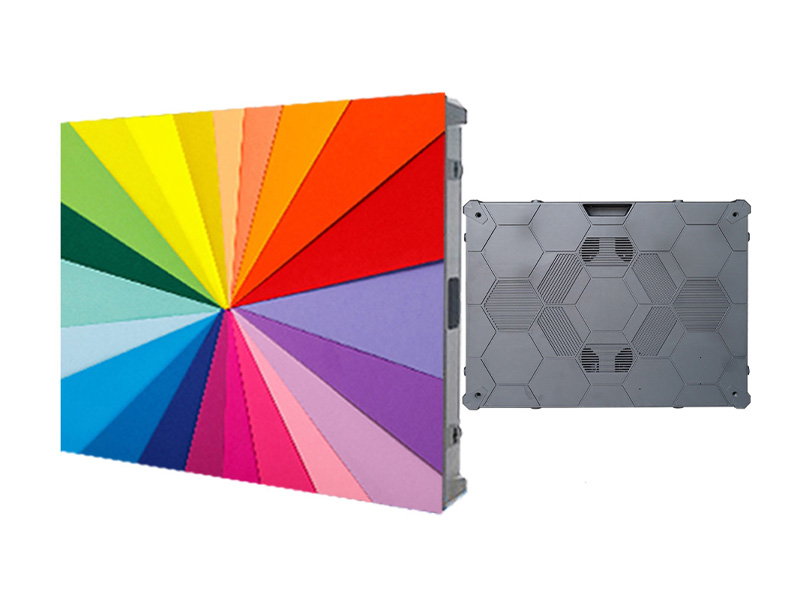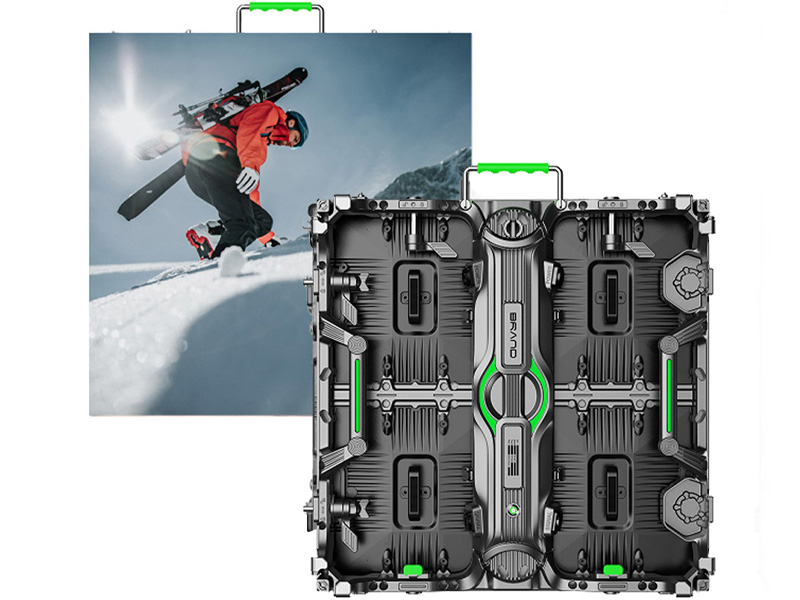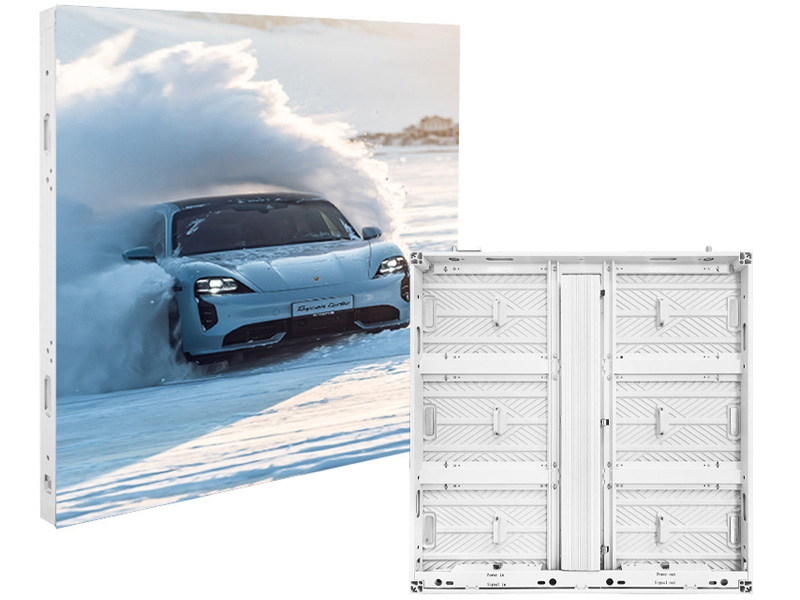Pixel Pitch – Comprehensive Interpretation 2024
If you’re wondering whether people still use wattage to measure the intensity or brightness of your lighting fixtures, then we’re about to burst your bubble! You see, lights and bulbs manufacturers as well as scientists don’t use wattage as a unit of measurement. So, what do they use? Well, lumens, of course.
For countless years, people have been under the misconception that lighting fixtures (such as bulbs, tube lights, etc.) should be purchased according to their respective wattage.
However, thanks to continuous innovation in the lighting industry, we now have a variety of incredibly efficient and energy-saving lights, mainly CFLs and LEDs.
Today, manufacturers incorporate a high degree of sustainability, efficiency, and effectiveness in their products, providing long-lasting and energy-efficient lighting products for both residential and commercial needs.
Considering this, we’re going to talk about why lumens are a more suitable unit for measuring the total brightness of any lights as opposed to wattage and help you understand the total amount of lumens you’ll need for your setting.
Since you are new to the concept of a pixel pitch, it will be better if you begin by understanding the basics and then step ahead to more details.
When you see an LED display with a smaller pixel pitch, that means there will be a higher pixel density, and you can enjoy more detailed and sharper images. On the other hand, if another LED display has a larger pixel pitch, then the screen is equipped with a lower pixel density, which leads to images that lack clarity, and you will have no fun watching your movies or sports.
You will find the theory very similar to the dots per inch measurement that was used in traditional means of printing.
Pixel pitch is correlated directly with the distance you are viewing from. For example, an LED display with a smaller pixel pitch is considered preferable for digital signage and retail stores or control rooms, where you need to view closely. And for that, clear visuals showing the major details are necessary
The larger pixel patch displays suit outdoor applications like a live match or concert that you can enjoy from a wide distance too and don’t need to go too near the screen.
LED displays are classified based on their pixel pitch. Sounds interesting, right? They are as follows:
-
Fine Pixel Pitch Displays (FPPD)
LED displays that you usually come across in control rooms, corporate presentations, and upper-scale retail shops are Fine Pixel Pitch Displays. These steal the show by having a pixel pitch typically below 2mm, and due to that, the displays offer outstanding image quality, and you won’t face any kind of issue when viewing closely.
-
Standard Pixel Pitch Displays
Next in line are the standard pixel pitch displays, which have a pixel pitch varying from 2mm to 5mm. What keeps them distinct from other displays? The answer is that they are versatile and compatible, which means you can use them for both indoor and outdoor purposes, such as digital signage, rental stages, and sports stadiums.
-
Large Pixel Pitch Displays
The last ones are the large pixel pitch displays. They attract you with their pixel pitches above 5mm. The LPPDs are heavily used outdoors, where you can see a clear image or footage from a distance. These are fit-in billboards, digital billboards, and scoreboards placed in stadiums. For all the activities mentioned, you don’t need to stand close to view things properly as the pixel pitch is doing its job.
As discussed at the start of the blog, a pixel pitch plays a pivotal role in giving you a fair idea about the LED quality and suitability of the screen when you are planning to use it for a particular purpose. However, there are several factors that affect a pixel pitch choice as well. They are as follows:
-
The Distance You Are Viewing From
The distance you are looking at the screen matters a lot in this case. When you need to closely view the visuals or the footage in a control room or high-end store, then a smaller pixel pitch offers convenience. A large pixel pitch facilitates outdoor applications in the shape of large auditoriums or stages, where you can enjoy the video quality from far away, too.
-
Type Of Content
What type of content you want to see also affects the pixel pitch selection. If you are looking at high-resolution videos, graphics, and text, then that will simply ask for a smaller pixel pitch to provide you with the best visuals. Whereas, viewing low-resolution content of different images and videos will not give you the best results.
-
Ambient Lighting
Lighting does wonders in this case. The more ambient lighting there is in the atmosphere, the better the image quality will be. In ambient-rich environments, a smaller pixel pitch may come in handy to maintain visual clarity so you can enjoy your movie, game, or sports with your friends or family.
-
Cost Considerations
Where a small pixel pitch enters, then be prepared to pay more, as these usually lead to steep prices due to the increased count of LEDs. You need to balance your budget with the desired image quality if buying an LED display with a small pixel pitch is necessary in your situation. Otherwise, go for a large pixel pitch, bearing that it won’t offer you ideal image clarity.
-
Screen Size
What is the entire size of the LED display screen? That also influences the impact of a pixel pitch. If you are adding a larger screen to your cart, then the device can easily accommodate a higher-pixel pitch while providing you with tolerable image quality.
-
Intended Audience
Who is the target audience for the LED display screening? For instance, if the youth is going to see a football match or enjoy a concert, you may require a smaller pixel pitch so they can enjoy crystal clear views, which they will certainly look forward to.
The specific application and viewing distance become a determining factor for the optimal performance of a pixel pitch for an LED display. The common applications for different pixel pitch ranges are as follows:
-
Fine Pixel Pitch (1.0mm – 2.5mm)
Fine pixel pitch display with varying pixel pitch from 1.0mm-2.5mm can be used in the following areas:
- Control Rooms
You must be familiar with what happens in control rooms. The officers are constantly monitoring to catch hold of any kind of suspicious activity and access data, too. Over here, the pixel pitch proves to be beneficial as it provides perfect image quality and clarity when they need to zoom in on the footage.
- Corporate Boardrooms
If you want to present a presentation based on detailed financial data, share important documentation on screen, or be a part of video conferencing that needs to be viewed closely, then that fine pixel pitch stands as a green flag. It supports high-resolution content without causing issues; otherwise, the blurry images will spoil the vibe, and the other members might as well request that you redo the project.
- Retail and Luxury Stores
As a store’s owner, it will be a dream come true for you if customers just keep coming to your shop. How can that happen? You can do that by installing an LED display carrying a fine-pixel pitch to create engaging and interactive high-resolution advertisements speaking about your new collection launch, an addition to your store’s service, or maybe a seasonal promotion. The crystal-clear image and video will compel the customers to become yours for eternity.
-
Medium Pixel Pitch (2.5mm – 3.9mm)
Where will the medium-pixel pitch for LED display assist you? The solutions are as follows:
- Retail Environments
In the retail world, the medium-pixel pitch can enhance product displays, promotion announcements, and digital menu boards. These have the potential to draw the audience’s attention without any chance of images getting blurred.
- Corporate Offices
You can fix the LED display in your conference rooms, hallways, and reception areas, and maybe for internal communication, too. The displays will do a terrific job of telling the guests about the office’s latest achievements and what is next in the pipeline.
- Houses of Worship
The LED display can assist people sitting at a distance by displaying lyrics, written announcements, and live video feeds. So even they are up to date as to what is happening currently.
-
Large Pixel Pitch (4mm – 10mm)
The large ones can facilitate outdoors in the following ways:
- Outdoor Advertising
A large-pixel pitch is effective in showing messages on large-scale billboards and digital signage in areas that usually receive high traffic. The large screen can easily grab the viewer’s attention, and there will be no tension in the message not getting across.
- Stadiums and Arenas
You cannot expect so many people to see scoreboards or what’s happening in the ground with their naked eye; therefore, large pixels can elevate the game’s experience. It can be used for advertisements, scoreboards, and fan engagement so everyone can enjoy the match equally.
- Transportation Hubs
The screens can be placed at stations, airports, and bus stops too. They will be excellent for displaying information about the next flight, train or bus, telling people about any delays and of course advertising.
If you are planning to organize a movie night, local match tournament, or sponsor a concert and want the whole audience to be a part of it, then you can buy the best LED displays from LEDSINO with the ideal pixel pitch.
We take immense pride in selling outdoor and indoor LED displays with reliable guarantees and pocket-friendly prices. You can have a look at our commercial LED displays, LED posters, other custom LED displays, etc.
![]() Soft Connection – Well-organized Layout
Soft Connection – Well-organized Layout
![]() Front-end Convenient Maintenance
Front-end Convenient Maintenance
![]() Cabinet Size: 640*480mm/4:3 Ratio
Cabinet Size: 640*480mm/4:3 Ratio
![]() Compatible with 320*160mm Module
Compatible with 320*160mm Module
![]() Front Convenient Maintenance
Front Convenient Maintenance
![]() Hard Connection, No Need Cables
Hard Connection, No Need Cables
![]() Can Removable Back Power Supply Box
Can Removable Back Power Supply Box
![]() With 3 Years Warranty and 5% Spare Parts
With 3 Years Warranty and 5% Spare Parts
![]() 3D Billboards Best Combination
3D Billboards Best Combination
![]() Energy Saving Display 30% Design
Energy Saving Display 30% Design
![]() Standard Size: 480×320/960*960mm
Standard Size: 480×320/960*960mm
![]() With 3 Years Warranty and 5% Spare Parts
With 3 Years Warranty and 5% Spare Parts
6. Bottom Line
Pixel pitch technology is constantly evolving and in this innovation of advancement, you will get to witness key trends in the form of Mini and Micro LEDs, Transparent LEDs, and Flexible LEDs. Each of them will startle you with their image clarity and sharp details.
Understanding pixel pitch is crucial for selecting the right LED display. By considering viewing distance, content type, ambient lighting, and budget, you can make an informed decision. LED displays with various pixel pitches offer diverse applications, from high-end control rooms to large outdoor venues, enhancing visual experiences and meeting specific needs.
Contact
 Building D, Hongfa Science Park,
Building D, Hongfa Science Park,
2035 Songbai Road, Shiyan, Bao’an District, Shenzhen, Guangdong, China.







